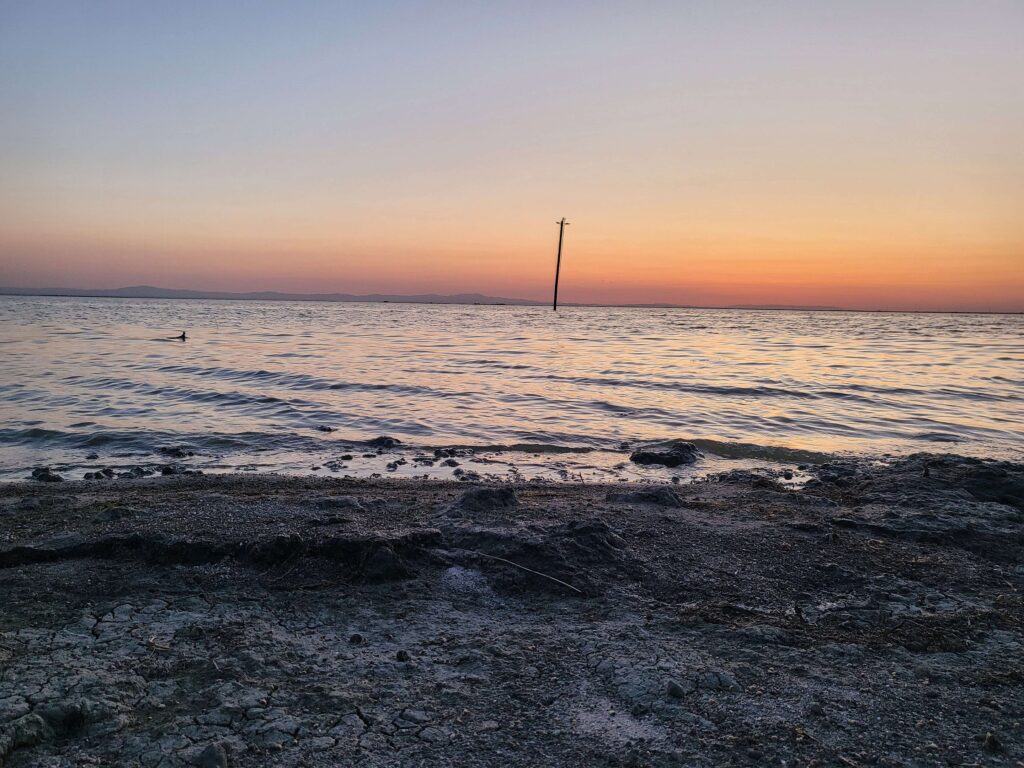Daily News
The Resurgence of Tulare Lake: A Story of Resilience and Restoration
Rediscovery of Tulare Lake: A triumph of nature and indigenous resilience

Tulare Lake
In the heart of California’s San Joaquin Valley lies a tale of nature’s resilience and the enduring spirit of indigenous communities. Tulare Lake, once the largest body of freshwater west of the Mississippi River, vanished from the landscape over a century ago, leaving behind a legacy of environmental and cultural upheaval. But now, in a stunning turn of events, the ancient lake has returned, bringing with it hope, healing, and a renewed sense of connection to the land.
For the Tachi Yokut Tribe, Tulare Lake, known as Pa’ashi, holds deep historical and cultural significance. It was not just a body of water but a lifeline, sustaining both people and wildlife for generations. However, the lake’s disappearance in 1898 marked the beginning of a dark chapter in the region’s history. Indigenous communities were persecuted and displaced, and the land was transformed for farming through draining and irrigation—a testament to the era’s deeply entrenched settler colonialism.
Despite periodic reappearances in the decades that followed, Tulare Lake remained largely absent from the landscape until the barrage of atmospheric rivers that flooded California in 2023. Against all odds, the lake returned, defying expectations and rekindling a sense of wonder among those who witnessed its resurgence. Now, once again stretching across the valley, Tulare Lake serves as a beacon of hope and a symbol of nature’s resilience.
The return of Tulare Lake has brought about a cascade of positive effects, both ecological and cultural. Native species have reclaimed their habitats, and migratory birds once again grace the skies above the Pacific Flyway. For the Tachi Yokut Tribe, the lake’s resurgence represents a return to ancestral lands and traditions. Ceremonies are once again held along its shores, and native plants are being reintroduced, signaling a renewed connection to the land and its natural rhythms.
However, the rejuvenation of Tulare Lake is not without its challenges. The floods have caused significant damage to crops, homes, and infrastructure, posing a dilemma for policymakers and residents alike. Yet, amidst the destruction, there is a growing consensus that Tulare Lake should be allowed to remain. Recognizing its importance as a vital component of the region’s ecosystem, there is a call for a paradigm shift in how we view and interact with the land.
Letting Tulare Lake remain could not only heal the Central Valley’s relationship with water but also serve as a model for ecological restoration and coexistence. As efforts to drain the lake continue, it is imperative that we consider the long-term implications and embrace a more holistic approach to land management—one that prioritizes sustainability, resilience, and respect for indigenous knowledge and stewardship.
In the words of Kenny Barrios, a cultural liaison for the Tachi Yokut Tribe, “The lake is just like us.” Resilient, enduring, and deeply connected to the land, Tulare Lake stands as a testament to the power of nature and the human spirit. As we embark on this journey of restoration and reconciliation, let us draw inspiration from the ancient waters that have returned to reclaim their rightful place in the landscape.
Tulare Lake, also known as Tache Lake in Yokuts language, is a freshwater lake located in the southern San Joaquin Valley, California, United States. It was historically the largest freshwater lake to the west of the Mississippi River. For thousands of years, from the Paleolithic era, Tulare Lake was a uniquely rich area that supported perhaps the largest population of Native Americans north of present-day Mexico.
In the latter half of the 19th century, Tulare Lake was drained by diverting its tributary rivers to support agricultural irrigation and municipal water usage. In contemporary times, it is typically a dry lakebed that features residual wetlands and marshes. The lake only reappears after episodes of unusually high rainfall or snowmelt, as it did in 1942, 1969, 1983, 1997, 1998, and 2023. (Wikipedia)